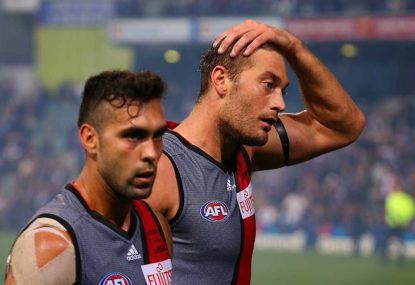In Part 1 I briefly touched on the WADA/CAS strands in the cable approach to finding the 34 players guilty of using Thymosin Beta-4 (TB4), despite that fact that no single strand extended out far enough to prove that even a single player used TB4.
The approach appeared to be one of stacking enough specks of disparate information high enough so as to give the illusion that the strands in the cable span the evidentiary gap, when in truth a chasm remained.
It was very much a case of quantity over substance.
Anyone who doubts that to be the case, need only take a closer inspection at some of the bolder claims made. Scratch the surface of some of these, and there’s very little underneath.
The very first strand was to show that Stephen Dank had a history of using TB4. That should be easy enough and what better example than that of Sandor Earl.
Problem – The ASADA website shows Sandor Earl as being sanctioned for the following substances; CJC-1295, Somatropin, Clenbuterol, Selective Androgen Receptor Modulators (SARMs), Testosterone. No TB4 to be seen.
This is meant to be the strand setting up everything which follows, but immediately falls flat, and indicates that both WADA and the CAS have not done their homework.
Next we have the CAS making this bold declaration: all Players admitted to receiving injections by Stephen Dank.
Problem – We now know that at least one player (Henry Slattery) did not take part in the injection program at all. That alone is sufficient to question the integrity of both WADA and the CAS concluding he used TB4, when quite clearly that is an absolute impossibility.
Next we have Sergio Del Vecchio, in the middle of purchasing Shane Carter’s company, supposedly advising Dank that the peptides he was giving the Essendon players were prohibited.
Problem – The ASADA evidence clearly shows that Del Vecchio expresses his concerns to Shane Carter, referring specifically to GHRP-6, which the Essendon players have never been accused of using.
Next we have the famous interview between Dank and Nick McKenzie of The Age, viewed by many as a turning point in the whole episode. Wittingly or otherwise, Dank puts on the public record what he used at Essendon.
I won’t call this out as a problem as such, I will merely sound a cautionary note – McKenzie does not actually ask a direct question to Dank as to what he used, but rather opens with a statement and Dank continues talking.
Secondly, when Dank describes the benefits of what he is giving the Essendon players, he clearly describes the benefits of Thymosin Thymomodulin, that benefit being to act as an immune booster.
McKenzie has another small role to play when in a column dated 16 December 2013, he refers to an email from Dean Robinson to James Hird, Mark Thompson, Danny Corcoran and Bruce Reid dated 15 June 2012 in which he refers to a course of Thymomodulin (one of the legal forms of Thymosin).
Next we have the supposed failure of the players to properly complete the doping control forms (DCF). This is worth spending some time on because both WADA and CAS use this to attack the credibility of the players, proof that they knowingly involved themselves in a doping program.
Problem one – These are the exact words contained in the DCF: “We recommend athletes consider declaring any substance used in the last seven days.” WADA and the CAS have painted this as some shocking omission of something which is mandatory, when quite clearly it is not.
Problem two – Only 16 players were tested, which is less than half of the 34 charged.
Problem three – The 34 players were denied the opportunity to view the DCFs, the reason given that it would breach the confidentiality of those players not part of the 34. In other words, players outside of the 34, not involved in the injection program, had been tested and would legitimately have had a nil return.
Problem four – Of those fewer than 16 players who were part of the 34 who were tested during the season, the critical question becomes: at what point in their program were they tested? Before, during, or after (also noting that the injections were stopped before the end of the season). Once again, players could have legitimately had a nil return.
At the end of the day, this DCF matter is a complete non-issue, yet both WADA and CAS have run with it hard, exaggerated the importance of it, to make the 34 look like quasi-criminals.
Next we have CAS questioning the credibility of Mark McVeigh because he never got a tan, having stated that he only was administered Melanotan.
Problem: Maybe because the substance was Melatonin, recovered by ASADA when they started their investigation, and fully documented. In case you’re wondering, this substance does not have a tanning effect.
Once again, WADA and CAS working over time to diminish the credibility of a player, but without any good reason and either not knowing, or not caring, what is contained in the original evidence.
A pattern emerges in each of these strands which either contain incorrect facts, or have been written to embellish the actual evidence, a sign that the strands in the cable are actually quite weak and cannot remain taut without a little bit of, shall we say, poetic license.
It’s also worrying that both WADA and CAS happily jump on board in making these exaggerated claims about the players, which is quite unbecoming of the panel.
I would like to close by quoting Renee Anne Shirley, a doping whistleblower whose first reaction upon reading the judgement was as follows: “I expected to be convinced by the details that emerged in front of the hearing tribunal… but the stretches in this CAS decision just seem too much.”
Acknowledgement: In writing this article I referenced pieces written by Bruce Francis and Darren Moore.





























































































